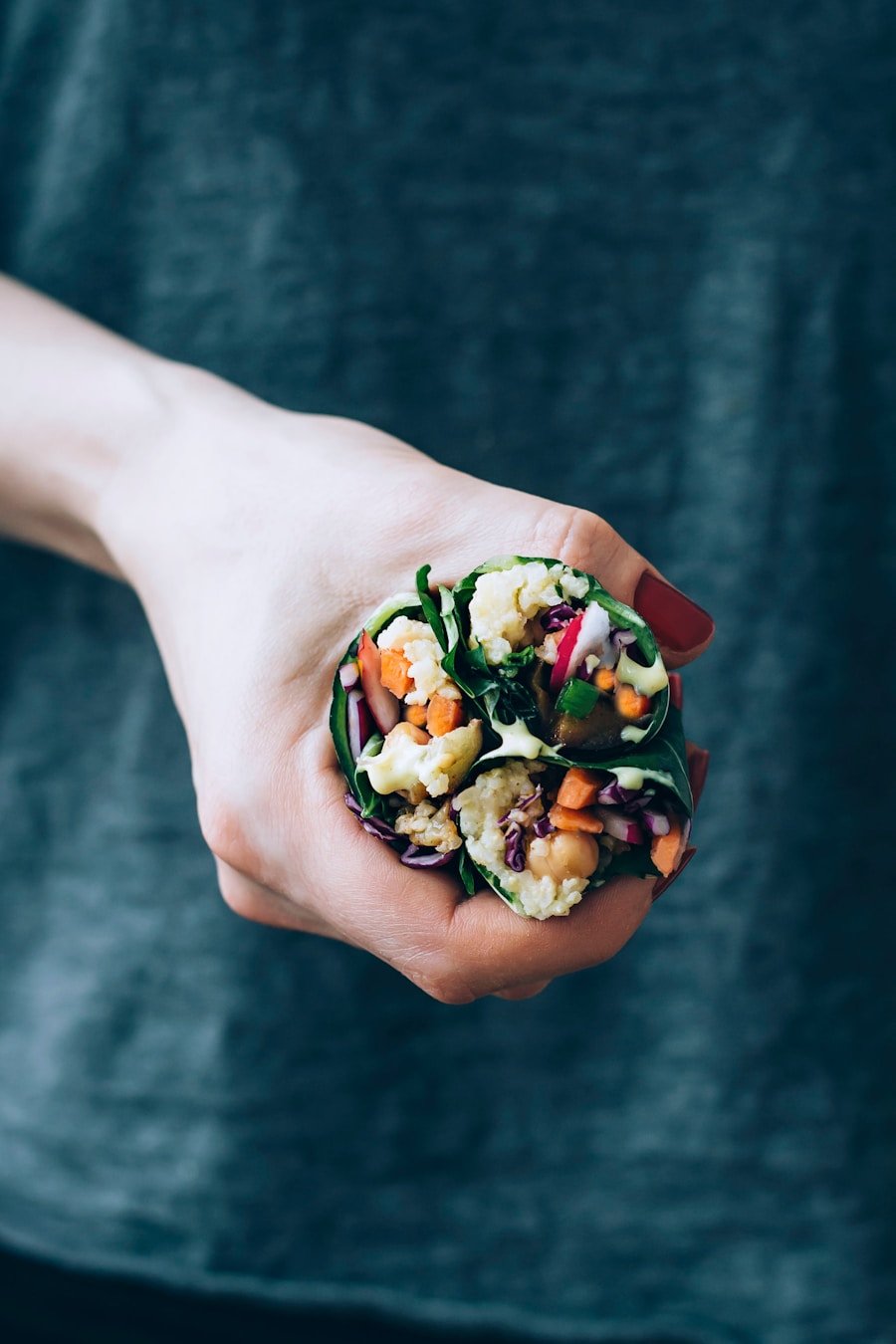This post may contain affiliate links. When you purchase through links on our site, we may earn an affiliate commission.
In a world that often prioritizes speed and convenience, I find myself reflecting on the concept of mindful eating. This practice encourages me to engage fully with my meals, transforming the act of eating into a more conscious and enriching experience. Mindful eating is not merely about what I consume; it’s about how I consume it.
By focusing on the present moment, I can cultivate a deeper appreciation for my food, enhancing both my physical and emotional well-being. This approach invites me to savor each bite, fostering a connection between my mind, body, and the nourishment I provide. As I delve into the principles of mindful eating, I realize that it encompasses more than just the act of eating itself.
It encourages me to explore my relationship with food, examining my habits, emotions, and the cultural influences that shape my choices. By embracing mindfulness at the dining table, I can break free from the automatic behaviors that often accompany meals. Instead of rushing through lunch or mindlessly snacking while watching television, I can create a ritual around eating that honors the food and the effort that went into preparing it.
This shift in perspective has the potential to transform my overall approach to health and wellness.
Key Takeaways
- Mindful eating involves being fully present and aware of the eating experience
- Mindful eating can improve digestion by reducing stress and promoting better nutrient absorption
- Chewing food thoroughly can aid in digestion and help you feel more satisfied
- Being mindful of portion sizes can prevent overeating and promote better digestion
- Paying attention to hunger and fullness cues can help you eat in a way that supports your body’s needs
The Connection Between Mindful Eating and Digestion
One of the most profound realizations I’ve had about mindful eating is its direct impact on digestion. When I eat mindfully, I not only enjoy my food more but also support my digestive system in functioning optimally. The process of digestion begins long before food enters my mouth; it starts with the anticipation and preparation of a meal.
By taking the time to appreciate the colors, aromas, and textures of my food, I activate my senses and prepare my body for digestion. This heightened awareness can lead to better salivation and enzyme production, setting the stage for a smoother digestive process. Moreover, when I practice mindful eating, I tend to chew my food more thoroughly.
This simple act is crucial for digestion, as it breaks down food into smaller particles, making it easier for my stomach to process. Chewing also allows enzymes in my saliva to begin breaking down carbohydrates, which is essential for proper digestion. By slowing down and focusing on each bite, I can enhance my body’s ability to absorb nutrients effectively.
This connection between mindfulness and digestion has encouraged me to be more intentional about how I approach meals, ultimately leading to improved gut health and overall well-being.
Slow Down and Chew Your Food Thoroughly

One of the most significant changes I’ve made in my eating habits is to slow down and chew my food thoroughly. In our fast-paced lives, it’s all too easy to rush through meals without giving them the attention they deserve. However, I’ve discovered that taking my time not only enhances my enjoyment of food but also aids in digestion.
When I consciously slow down, I allow myself to fully experience the flavors and textures of each bite. This practice transforms eating from a mundane task into a delightful sensory experience. Chewing my food thoroughly has become a cornerstone of my mindful eating journey.
As I focus on each bite, I notice how different foods release their flavors and how textures can vary from crunchy to creamy. This heightened awareness has made me more appreciative of the meals I prepare and consume. Additionally, by chewing more, I’m giving my stomach a head start in breaking down food before it even reaches it.
This simple act has made a noticeable difference in how I feel after meals; I often find myself feeling lighter and more energized rather than sluggish or bloated.
Pay Attention to Portion Sizes
| Food | Recommended Portion Size | Actual Portion Size |
|---|---|---|
| Chicken Breast | 3 oz | 6 oz |
| Pasta | 1/2 cup | 1 cup |
| Broccoli | 1 cup | 2 cups |
| Rice | 1/2 cup | 1.5 cups |
Another essential aspect of mindful eating that I’ve embraced is paying attention to portion sizes. In a society where larger portions are often celebrated, it can be challenging to gauge what constitutes an appropriate amount of food for me. However, by practicing mindfulness, I’ve learned to listen to my body’s signals and serve myself portions that align with my hunger levels.
This shift has not only helped me avoid overeating but has also fostered a healthier relationship with food. When I take the time to assess portion sizes mindfully, I become more aware of how much food I truly need to feel satisfied. Instead of filling my plate out of habit or social pressure, I now consider factors such as my activity level and how I’m feeling at that moment.
This practice has empowered me to make choices that honor my body’s needs rather than succumbing to external influences. As a result, I find myself enjoying meals more fully without the discomfort that often accompanies overeating.
Listen to Your Body’s Hunger and Fullness Cues
Listening to my body’s hunger and fullness cues has been one of the most transformative aspects of my mindful eating journey. In the past, I often ate based on external cues—like the time of day or what others were eating—rather than tuning into what my body was telling me. By practicing mindfulness, I’ve learned to recognize the subtle signals that indicate when I’m hungry or satisfied.
This awareness has allowed me to cultivate a deeper connection with my body and its needs. As I become more attuned to these cues, I find that my relationship with food has shifted significantly. Instead of viewing meals as an obligation or a source of guilt, I now see them as opportunities to nourish myself intentionally.
When I feel hunger pangs, I take a moment to assess whether they are genuine physical hunger or emotional cravings. Similarly, when I start to feel full, I check in with myself before reaching for seconds or dessert. This practice has empowered me to make choices that align with my body’s needs rather than societal expectations or habits.
Avoid Distractions While Eating

In our technology-driven world, distractions are everywhere—especially during meals. However, I’ve come to realize that avoiding distractions while eating is crucial for practicing mindfulness. When I sit down for a meal, I make a conscious effort to put away my phone, turn off the television, and create an environment conducive to focused eating.
By eliminating these distractions, I can fully immerse myself in the experience of eating and truly appreciate each bite. This commitment to distraction-free meals has had a profound impact on how I perceive food. Without the constant pull of notifications or background noise vying for my attention, I can savor flavors and textures more deeply.
Eating becomes a meditative practice rather than a rushed task. As a result, I find that I’m more satisfied with smaller portions because I’m fully present during the meal. This shift has not only enhanced my enjoyment of food but has also contributed to better digestion and overall well-being.
Choose Nutrient-Dense Foods
As part of my mindful eating journey, I’ve made a conscious effort to choose nutrient-dense foods that nourish both my body and mind. In a world filled with processed options that may be convenient but lack nutritional value, I’ve learned the importance of prioritizing whole foods rich in vitamins, minerals, and other essential nutrients. By focusing on these foods—such as fruits, vegetables, whole grains, lean proteins, and healthy fats—I can fuel my body with what it truly needs.
Choosing nutrient-dense foods has transformed not only how I feel physically but also how I approach meals emotionally. When I’m mindful about selecting ingredients that support my health goals, I’m more likely to enjoy cooking and preparing meals from scratch. This process allows me to connect with the food I’m consuming on a deeper level while also fostering creativity in the kitchen.
As a result, I’ve developed a greater appreciation for the flavors and benefits of wholesome ingredients.
Practice Gratitude for Your Food
Finally, one of the most enriching aspects of mindful eating is practicing gratitude for the food on my plate. Before each meal, I’ve started taking a moment to reflect on where my food comes from—the farmers who grew it, the hands that prepared it, and even the earth that nurtured it. This simple act of gratitude transforms my relationship with food from one of mere consumption to one of appreciation and respect.
By cultivating gratitude for my meals, I’ve noticed a shift in how I approach eating as a whole. Instead of viewing food as just fuel or an obligation, I’m reminded of its role in nourishing not only my body but also my spirit. This practice encourages me to savor each bite mindfully while acknowledging the effort that goes into bringing food from farm to table.
As a result, I’ve developed a deeper connection with what I eat and an increased sense of fulfillment during meals. In conclusion, embracing mindful eating has been a transformative journey for me—one that has enriched both my relationship with food and my overall well-being. By slowing down, paying attention to portion sizes, listening to my body’s cues, avoiding distractions, choosing nutrient-dense foods, and practicing gratitude, I’ve cultivated a more intentional approach to eating that honors both myself and the nourishment provided by nature.
As I continue on this path, I’m excited about the positive impact mindful eating will have on my life moving forward.
If you’re looking to improve your digestion through mindful eating practices, you may also be interested in exploring comforting recipes that promote overall wellness. Check out A to Z Cozy Corner’s collection of comforting recipes for inspiration on nourishing your body and soul. Additionally, creating a cozy and inviting atmosphere in your home can enhance your dining experience and encourage mindful eating habits. Learn more about home decor tips and ideas at A to Z Cozy Corner.
FAQs
What is mindful eating?
Mindful eating is the practice of being fully present and aware while eating, paying attention to the sensory experience of the food, and being conscious of the thoughts and emotions that arise during the eating process.
How does mindful eating improve digestion?
Mindful eating can improve digestion by allowing the body to enter a relaxed state, which promotes better digestion and absorption of nutrients. It also helps to reduce stress and anxiety, which can negatively impact digestion.
What are some mindful eating practices for better digestion?
Some mindful eating practices for better digestion include chewing food thoroughly, eating slowly and savoring each bite, paying attention to hunger and fullness cues, and avoiding distractions while eating.
Can mindful eating help with digestive issues such as bloating and indigestion?
Yes, mindful eating can help with digestive issues such as bloating and indigestion by promoting better digestion and reducing stress, which are common contributors to these issues.
Is there scientific evidence to support the benefits of mindful eating for digestion?
Yes, there is scientific evidence to support the benefits of mindful eating for digestion. Studies have shown that mindful eating can improve digestion, reduce symptoms of gastrointestinal disorders, and promote overall digestive health.
How can I incorporate mindful eating into my daily routine?
You can incorporate mindful eating into your daily routine by practicing techniques such as mindful breathing before meals, eating without distractions, and paying attention to the sensory experience of the food.
Are there any specific foods that are recommended for mindful eating and better digestion?
While there are no specific foods that are recommended for mindful eating, choosing whole, unprocessed foods and paying attention to how different foods make you feel can contribute to better digestion.
Can mindful eating help with weight management in addition to digestion?
Yes, mindful eating can help with weight management in addition to digestion by promoting a healthier relationship with food, reducing overeating, and increasing awareness of hunger and fullness cues.
Are there any potential drawbacks to mindful eating for digestion?
There are no inherent drawbacks to mindful eating for digestion, but it may not be suitable for individuals with certain eating disorders or those who have difficulty connecting with their body’s hunger and fullness cues.
How long does it take to see the benefits of mindful eating on digestion?
The benefits of mindful eating on digestion can vary from person to person, but many individuals report noticing improvements in digestion and overall well-being after incorporating mindful eating practices into their routine for a few weeks.

 using WordPress and
using WordPress and 
No responses yet